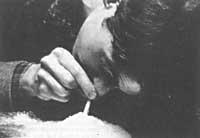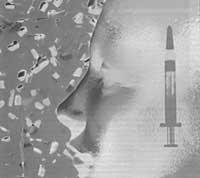Cocaine consumption: what is the current situation?
1991/07/01 Agirre, Jabier - Medikua eta OEEko kidea Iturria: Elhuyar aldizkaria
The scandal that the case of Maradona has generated around the world allows us, once again, to treat the use and abuse that millions of people make of cocaine consumption and, from our point of view, the serious medical consequences of this phenomenon.
Although cocaine was initially presented as a rich and famous drug, it is currently consumed by people from all socioeconomic groups. Many cocaine consumers are executives, vendors, businessmen (and women) or professionals, but this drug is increasingly widespread in lower socioeconomic groups.
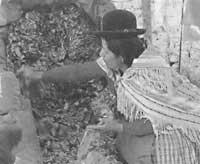
Excessive consumption of cocaine during adolescence is becoming quite frequent. For example, the number of schoolchildren (and not so children) who accepted that they were taking cocaine between 1975 and 1983 has almost doubled: from 9% to 17%. And of them, 3% acknowledged having used cocaine every day the month before the survey. (This survey was conducted in the United States, New York, so this data cannot be extrapolated directly to us, but it should be assumed that the age to start consuming cocaine has also decreased considerably in Euskal Herria).
It is difficult as a game (?) Predicting the personality or personality of the consumer, the form of administration, the power of the drug, the ease of access and other factors are potential. Exposure to drugs (i.e., sporadic consumption) is the primary risk factor.
According to surveys, of this large group of experimenters, at least 20-25% become regular consumers. But after all, since there are no predictions about what is going to become a drug addict, we should consider that anyone who takes the drug is in danger.
Pharmacological Effects
Cocaine produces numerous pharmacological effects, very different. The drug has become very popular for the hyperstimulation it produces in the central nervous system (euphoria, intelligence, confidence and feeling of power). Consumers feel good, very talkative, strong, effective and with great self-confidence. However, these changes last little (10-30 minutes) and doses should be taken over and over again to maintain the effects for a long time. These effects on CNS are due to the violent effects of cocaine on neurotransmitters such as dopamine or norepinephrine. Cocaine, for its part, is a forest builder that raises blood pressure and creates tachycardia. Cocaine can also produce cardiac arrhythmias and increased respiratory rhythm.
Chronic consumption of cocaine carries physical and psychological changes. In addition to the immediate cardiovascular effects mentioned above, studies indicate that they have suffered seizures around 15% of chronic consumers (related to cocaine). Consumers, in the absence of their usual dose of cocaine, are irritated, slow down their value and mood, are discouraged, have difficulty falling asleep and have a great desire to use drugs. All these uncomfortable and uncomfortable symptoms relieve cocaine so it is usually consumed over and over again and it is very difficult to break this chain after it has been consuming chronically.
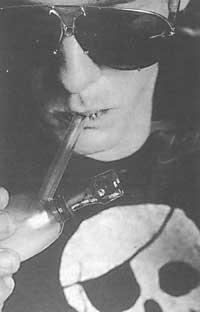
Although cocaine abstinence only produces mild physical symptoms (especially when compared to other drugs and substances), perhaps due to psychological influences, the first stages of the abstinence phase, together with the need for hard drugs, are very hard. The usual addict uses the drug to interact with his friends, to eat, to have sex, or even to sleep. Weight loss, lower performance at work, and difficulties in interpersonal relationship are common.
Administrative routes
There are many techniques of transmission or arrival of cocaine to the blood stream, quite used. The rapid penetration (reaching the blood) and the serum level reached (blood cocaine level) are important both in the rise and in the formation of addiction.
For years the cocaine has been inhaled, snifada, absorbing through the nasal mucosa. The serum level obtained with this method is relatively low, since the vasoconstrictor effect of the drug limits absorption. Inhalation can puncture the nasal septum in chronic consumers (due to ischemic necrosis that can cause prolonged and prolonged vasoconstriction).
Intravenously the cocaine gets its effect quickly and the levels of cocaine that can be obtained in blood are very high. The BB administration of cocaine can result in any of the usual complications of drug users via this route (endocarditis, abscesses, septicemia, hepatitis, AIDS, etc.)
The burning of cocaine paste in recent years has allowed consumers to inhale high concentrations of alkaloids and rapidly absorb blood circulation in the lungs. In this way, the effect of cocaine is more severe than that of snifada, practically equal to that of BB injection. However, in order to consume it this way, a special paraphernalia is necessary to extract, heat and evaporate the cocaine before inhaling it.
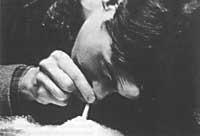
Crack Crack
It has been released by name the latest novelty in this world of drugs (perhaps some other has already been published). Elhuyar. In number 35 of Science and Technology, this topic was extensively analyzed. Therefore, the interested reader can address it.
Crack Crack
is the cocaine base, ready to burn, introduced in small containers. Although cocaine was considered pure in principle, all adulterants have not yet been eliminated, and this carries risks. Crack can be burned when it is and the effects are quick but short lasting (5-10 minutes). Then the decrease occurs, with irritability, agitation and need of cocaine, and to avoid it most consumers will resort to the drug dose. Smoking again and again can produce depressive and paranoid symptoms; impulses and unpredictable behaviors and in some cases suicide.
Treatment of treatment Treatment
The treatment of cocaine addiction can be done in the outpatient or in the hospitalized patient. Since cocaine (unlike alcohol or heroin) does not produce serious physical addiction, the sudden interruption of consumption has no serious consequences from a medical point of view. Therefore, in the case of cocaine, there is no gradual and well-established detoxification regime. However, before starting any type of treatment, a comprehensive medical and psychiatric evaluation of the patient is required.
Although the objectives of the treatment should be specific and individualized with the methods to be used, regardless of where the treatment is carried out, there are general rules or principles of great importance to obtain satisfactory results:
- First, the patient must leave the cocaine completely. Patients intending to reuse the drug socially fail and soon return to their old level of addiction. Who says that instead of completely leaving the cocaine going to take less, it is not really playing, because it does not take into account the rise of cocaine addiction.
- Second, patients should not take alcohol, marijuana, or other drugs. Normally the patient would use another drug to get off the cocaine and want to continue with it. It must be avoided at all costs.
- Thirdly, patients should give their consent to regularly monitor and monitor the use of non-legal or illicit drugs. This point will apply to both hospitalized patients and ambulant patients.
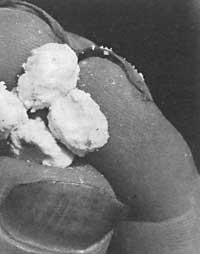
Treatment, however, is a long-term process for both admitted patients and outpatients.
As a conclusion, as a conclusion
As more and more powerful forms of cocaine can be acquired in the market, the number of people held has been growing. All (especially health personnel) should be attentive to the possibility of cocaine addiction, without having to rely too much on the socio-economic group or on the age of the patient. The population has had more chances of becoming aware of the problem or its importance in recent times, due to the death and other cases such as the sad case of Maradona, of personalities who have been associated with cocaine consumption.
However, many other cases go unnoticed despite being closer to us. Cocaine addiction can be treated with the help of specialized programs and specialized personnel from family, doctors, and health. The first step is to detect the problem, helping the patient to leave this initial negativist state.
Cocaine is a substance extracted from the vegetable leaves Erythroxylon coca, a plant typical of the eastern mountain regions of the Andes and South America (Peru and Bolivia). Its inhabitants have chewed these leaves for hundreds of years, especially in the higher regions, to improve their resistance. More recently, the effects of the coca leaf have increased with the obtaining of purified cocaine from these leaves (the percentage by weight of cocaine in the vegetable leaves ranges from 0.5% to 1.7%). This purified form of coca leaf is the basis of any other administrative form. Chemically classified as benzoyl-methyl ecgonine; C17,H21NO4. With chemical structure it resembles other contemporary local anesthetics, that is, procaine and lidocaine. Pure cocaine, XIX. At the end of the twentieth century it was isolated for the first time in Europe and in 1880 von Anrepsol studied his pharmacological effects. He found that the drug had a very strong local anesthetic effect. In 1884 Sigmund Freud conducted an exhaustive study on the physiological effects of cocaine, including its ability to elevate mood to euphoria. These indications of Freud were transferred by Karl Koller to the ophthalmology area, effectively using as a local anesthetic drug. Its use was rapidly extended to dentistry and surgery. But the passage from there to August was very small, and as soon as the drug was made available, consumption increased by its stimulating effect. For years, it was thought that cocaine did not create addiction. What is believed to be is that later it has been shown. In the last 10-15 years the consumption of cocaine has grown dramatically, increasing year after year the number of people who have tested this drug (currently around 20-25 million US). Between five and six million are regular cocaine users and about two million of the addicts recorded to this drug. And these figures, despite being terrifying, are previous to the fashion of crack. |

Gai honi buruzko eduki gehiago
Elhuyarrek garatutako teknologia



